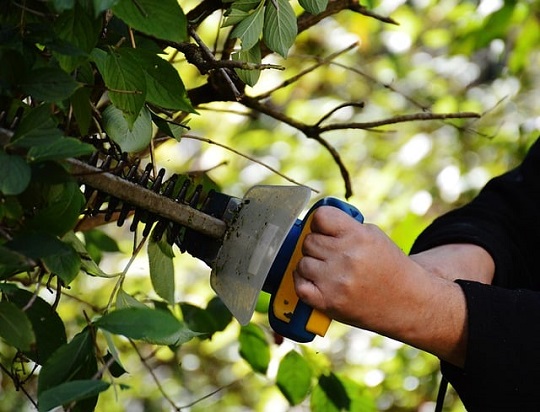Gardening in areas inhabited by deer comes with its own set of obstacles. Those of us who have experienced the struggle understand the difficulty of maintaining a stunning garden amidst deer activity.
Building a deer-proof fence is an effective solution for gardeners and homeowners who have experienced the frustration of deer damaging their plants and gardens. A well-designed and properly constructed fence can help protect your garden and keep deer at bay.
What are the best tips to make your garden deer-proof? Read on.
Tips for Building a Deer-Proof Fencing
Building a fence that effectively keeps deer out requires careful consideration of various factors. Let’s explore some essential tips to help you create a deer-proof fencing solution.
Choose an Appropriate Height
When constructing a deer-proof fence, choosing the right height is crucial. Deers are known to jump over obstacles, so a fence too low will be ineffective. Opt for a fence height of at least 8 feet to discourage deer from leaping over.
Keep in mind that some deer species may be capable of jumping even higher, so consider local deer populations and their behavior when determining the ideal fence height for your area.
Use Sturdy Fencing Materials
Deer can exert significant force and may attempt to push or nudge their way through a fence. Choose materials such as heavy-duty wire mesh, metal posts, or wooden boards that can withstand deer pressure and resist damage.
Consider Construction Best Practices
Adhering to construction best practices is essential when building a deer-proof fence. Properly anchor the fence posts securely into the ground to prevent deer from pushing them over. Ensure the fence is installed with tight connections and minimal gaps, as deer can squeeze through small openings. Regularly inspect and maintain the fence to address any potential weak points or damage.
Do Double Fencing
Another effective technique for deterring deer is using double fencing. This involves constructing two parallel fences with a distance of about 4 to 6 feet between them. The space between the fences serves as a deterrent zone, making it more difficult for deer to navigate through.
Conversely, you can add an electric fence. They can also deter deer from entering your garden. However, it’s important to note that not all local authorities permit their use. Before installing an electric fence, verify the zoning regulations specific to your area. This will ensure compliance with local laws and guidelines regarding implementing electric fencing.
This method provides an additional layer of protection and increases the effectiveness of your deer-proof fence.
Think of Your Material of Choice
The choice of fencing material can also impact the success of your deer-proof fence. Solid materials such as wood or vinyl panels can provide visual barriers. These materials make it harder for deer to see what’s on the other side. Use a wood fence calculator to get the spacing right.
Additionally, materials with narrow spacing, such as wire mesh or netting, can make it challenging for deer to pass through.
Add Visual Deterrents
Incorporating visual deterrents alongside your deer-proof fence can further discourage deer from approaching your garden. Hang shiny objects like aluminum foil strips or CDs on the fence to create movement and reflection, which can startle and confuse deer. You can also use motion-activated lights or sprinkler systems to surprise and deter them.
These intelligent sprinklers are designed to sense motion and respond by delivering a sudden burst of water in the direction of the movement, startling and frightening deer away. Their adjustable range sets these sprinklers apart, allowing you to target the desired area. This feature makes them particularly well-suited for safeguarding vegetable gardens and individual shrub or flower beds, effectively protecting plants from deer damage.
Key Takeaways
With a well-designed and properly installed fence, you can enjoy the beauty and productivity of your garden while keeping deer at a safe distance.
1. Choose an appropriate fence height of at least 8 feet to deter deer from jumping over.
2. Use sturdy fencing materials that can withstand deer pressure and resist damage.
3. Adhere to construction best practices, ensuring tight connections and minimal gaps.
4. Consider double fencing for added protection and deterrent effect.
5. Select materials that provide visual barriers or narrow spacing, making it difficult for deer to pass through.
6. Incorporate visual deterrents such as shiny objects, motion-activated lights, or sprinkler systems.








